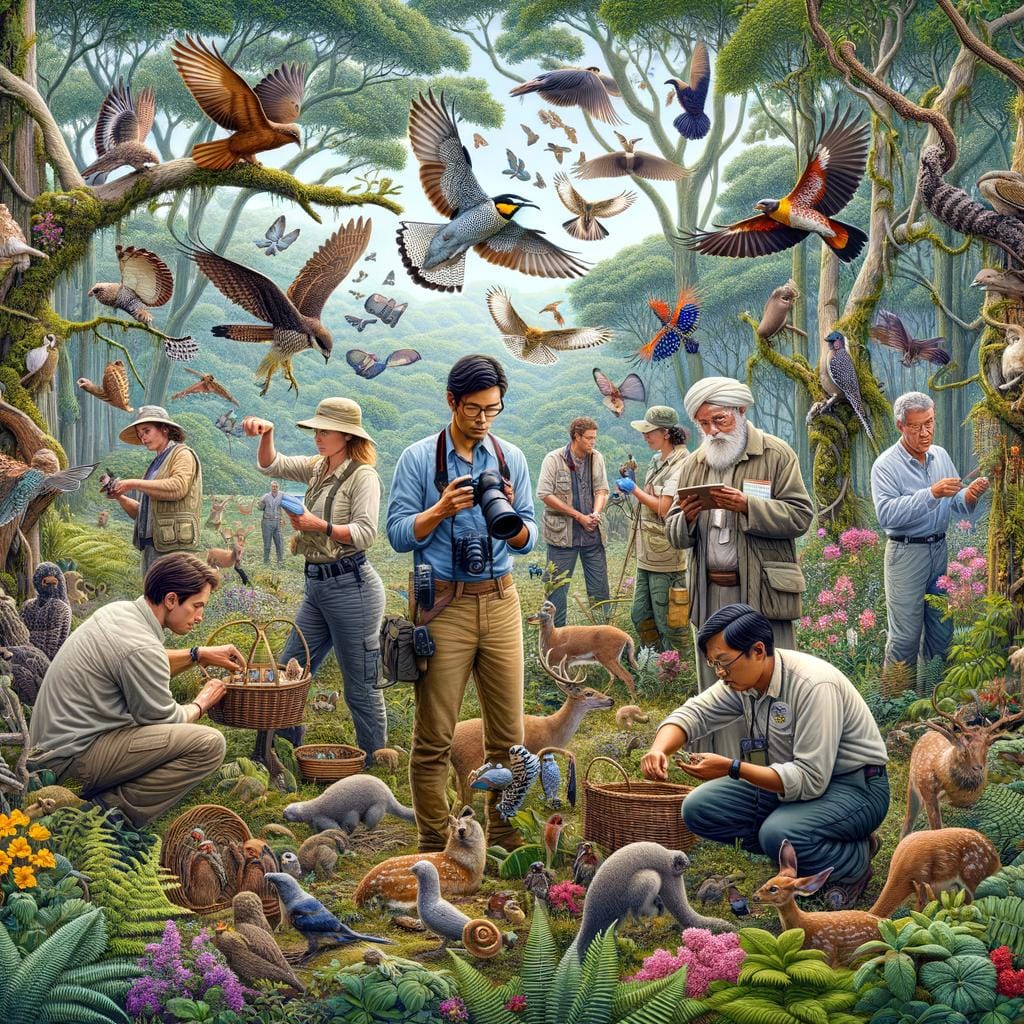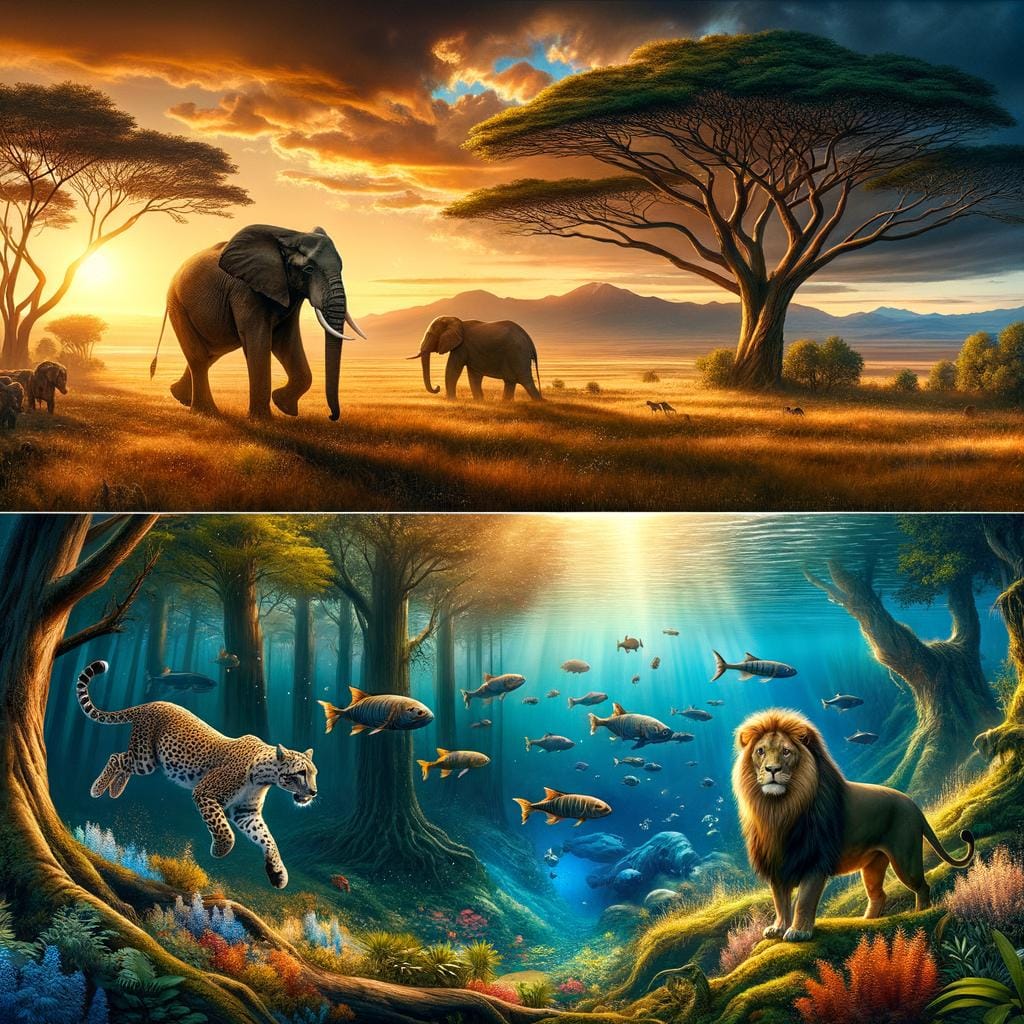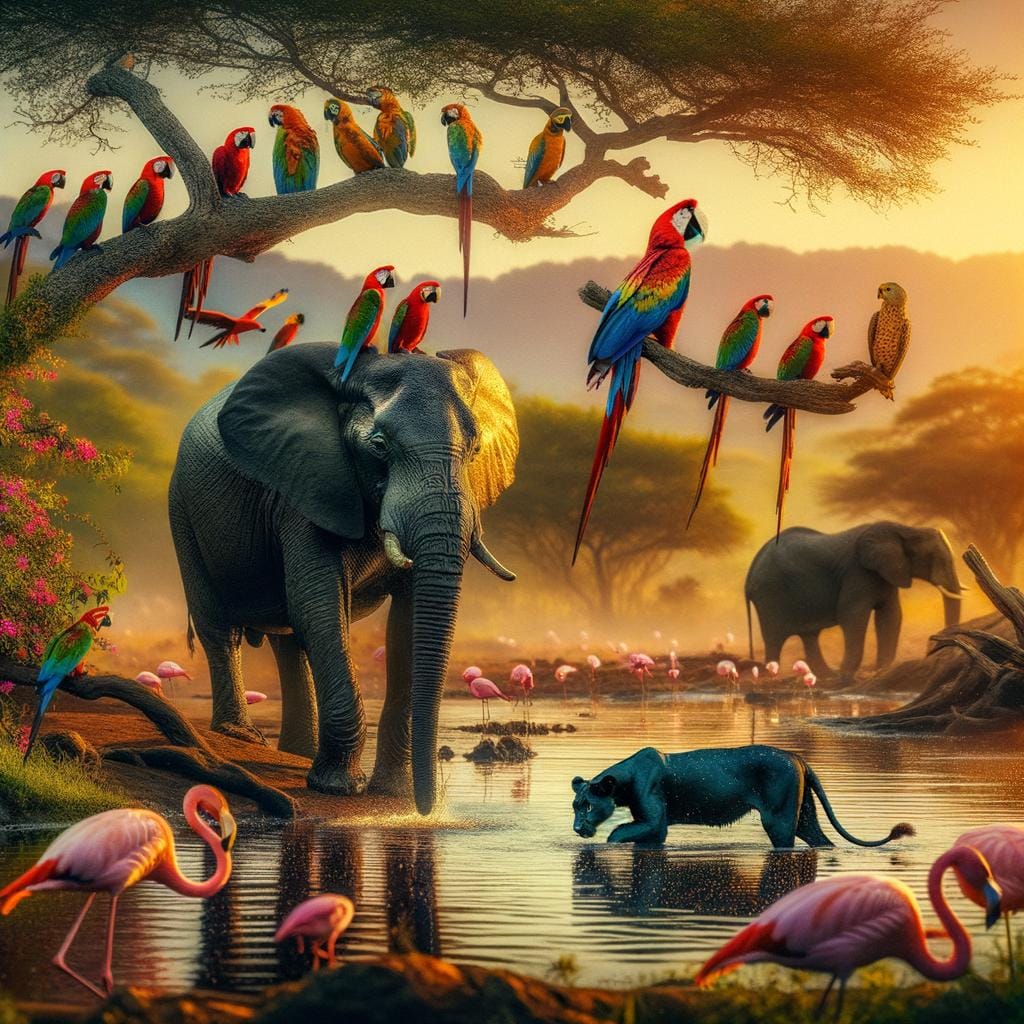Wildlife conservation is a critical component of preserving the delicate balance of ecosystems around the world. With the alarming rate of species extinction and habitat loss, it has become increasingly important to address the threats facing our planet’s wildlife.
Human activities such as deforestation, poaching, and pollution, along with factors like habitat destruction and climate change, all contribute to the endangerment of various species. In this article, we will delve into the significance of wildlife conservation and the urgent need for action to protect our natural world.
The disruption of ecosystems due to declining wildlife populations has ripple effects on entire food chains and leads to a loss of biodiversity. The interdependence between different species in an ecosystem highlights the intricate web of life that must be maintained to ensure its survival.
By exploring the impact on ecosystems, we can better understand how crucial it is to address the challenges faced by wildlife today. Additionally, success stories in conservation efforts serve as beacons of hope, showcasing what can be achieved through dedicated initiatives and collaborative efforts.
From establishing protected areas to implementing wildlife corridors and engaging local communities in conservation efforts, there are various strategies that have proven effective in safeguarding endangered species. Technology also plays a pivotal role in tracking endangered species and monitoring illegal activities that threaten their existence.
Global initiatives at an international level further emphasize the collective responsibility we hold towards wildlife conservation. Ultimately, each individual has a part to play in contributing towards preserving our natural world through volunteering, adopting sustainable practices, and supporting organizations dedicated to conservation efforts.
Threats to Wildlife
Human activities, habitat destruction, and climate change are significant threats to wildlife conservation worldwide. Human activities such as deforestation, overfishing, poaching, and pollution have directly contributed to the decline of many species. These actions not only destroy habitats but also disrupt natural ecosystems and food chains. Additionally, the increasing impacts of climate change, including rising temperatures, extreme weather events, and habitat loss due to shifting conditions, pose a grave threat to the survival of numerous species.
According to the World Wildlife Fund (WWF), habitat destruction is the leading cause of species extinction. Deforestation for agriculture or urban development results in the loss of critical habitats for wildlife populations. This destruction forces animals to migrate or adapt to new environments, often leading to competition with other species and limited resources. Moreover, illegal poaching and wildlife trafficking continue to decimate vulnerable populations of various animals across the globe.
In response to these threats, organizations and governments are implementing conservation strategies to protect wildlife and their habitats. Designating protected areas where human activities are restricted helps safeguard biodiversity hotspots and critical habitats. Establishing wildlife corridors that connect fragmented landscapes enables animals to move between different areas for breeding, foraging, or migration. Additionally, involving local communities in conservation efforts promotes sustainable practices and raises awareness about the importance of preserving wildlife for future generations.
| Threats | Impact |
|---|---|
| Habitat Destruction | Losing biodiversity |
| Climate Change | Disrupting ecosystems |
| Human Activities | Poaching & Pollution |
Impact on Ecosystems
Wildlife conservation plays a crucial role in maintaining the balance and health of ecosystems around the world. When species disappear due to various threats like habitat destruction, climate change, or human activities such as poaching and deforestation, it can lead to a disruption in food chains.
The loss of key species can have cascading effects on other species within the ecosystem, ultimately impacting the overall biodiversity. As predators or prey disappear, it can create imbalances that affect the entire ecosystem’s functioning.
In addition to disrupting food chains, the loss of biodiversity caused by threats to wildlife can have far-reaching consequences. Biodiversity is essential for resilience in ecosystems, ensuring they can adapt to changing conditions and thrive over time. When species become extinct or populations decline significantly, it diminishes the genetic diversity within ecosystems and reduces their ability to withstand environmental challenges. Protecting wildlife and preserving biodiversity are essential components of effective wildlife conservation efforts.
Efforts focused on wildlife conservation play a vital role in not only protecting individual species but also safeguarding the intricate web of interactions within ecosystems. By addressing threats to wildlife and implementing conservation strategies such as creating protected areas and promoting community involvement, it is possible to mitigate the impacts on ecosystems. Through collective action at both local and global levels, we can work towards preserving our natural world for future generations and ensuring that wildlife thrives in balanced ecosystems.
Success Stories
Conservation efforts around the world have shown remarkable success stories in protecting and preserving various species and habitats. One such example is the recovery of the bald eagle population in the United States. Due to habitat loss, hunting, and pesticide use, bald eagles were once on the brink of extinction.
However, through concerted conservation efforts, including banning harmful pesticides like DDT and establishing protected areas, the bald eagle population has rebounded significantly. This success story serves as a testament to the positive impact of wildlife conservation initiatives.
Another inspiring success story is the revival of the Giant Panda population in China. With their habitat being threatened by deforestation and human encroachment, Giant Pandas faced a serious risk of extinction.
However, through dedicated conservation programs focused on habitat protection, breeding initiatives, and community involvement, the Giant Panda population has seen a steady increase in recent years. This achievement highlights the effectiveness of collaborative efforts in wildlife conservation that involve government institutions, NGOs, local communities, and scientists working together towards a common goal.
The case of the Black-footed Ferret also stands out as a successful example of wildlife conservation efforts. Facing extinction due to habitat loss and disease outbreaks, these small carnivores were successfully reintroduced into parts of their historical range after being declared extinct in the wild.
Through captive breeding programs and habitat restoration projects, the Black-footed Ferret population has shown signs of recovery. These success stories demonstrate that with dedication, resources, and cooperation from various stakeholders, it is possible to make a significant difference in wildlife conservation efforts.
| Wildlife Conservation Success Stories | Key Achievements |
|---|---|
| Bald Eagle Population Recovery | Rebounded significantly due to conservation efforts banning harmful pesticides like DDT. |
| Giant Panda Revival | Saw an increase in population through habitat protection, breeding programs, and community involvement. |
| Black-footed Ferret Reintroduction | Successfully reintroduced into parts of their historical range through captive breeding and habitat restoration projects. |
Conservation Strategies
Protected Areas
Protected areas play a crucial role in wildlife conservation by providing safe havens for various species to thrive without the threat of human interference. These designated areas, such as national parks, wildlife reserves, and marine sanctuaries, help preserve biodiversity and maintain ecological balance. By establishing protected areas, governments and conservation organizations can ensure the survival of endangered species and protect their habitats from further degradation.
Wildlife Corridors
Wildlife corridors are essential for maintaining connectivity between fragmented habitats and allowing animals to migrate safely. These pathways enable species to move between different areas in search of food, mates, or suitable environments. By creating wildlife corridors or green belts that connect protected areas, conservationists can prevent genetic isolation and improve the long-term viability of populations. This strategy helps mitigate the negative effects of habitat fragmentation caused by human activities such as urbanization and deforestation.
Community Involvement
Engaging local communities in wildlife conservation efforts is key to ensuring the long-term success of conservation initiatives. When communities are involved in decision-making processes and actively participate in conservation projects, they develop a sense of ownership and responsibility towards protecting their natural surroundings.
By promoting sustainable livelihoods, raising environmental awareness, and providing opportunities for education and ecotourism, community involvement can foster a culture of coexistence between humans and wildlife. Through collaborative efforts between residents, governments, NGOs, and researchers, communities can contribute significantly to wildlife conservation while improving their own well-being.
Role of Technology
The use of technology in wildlife conservation has revolutionized the way we protect and monitor endangered species, as well as combat illegal activities that threaten wildlife populations. Through innovative tools and techniques, conservationists are able to track animals more effectively, gather crucial data for research, and detect and deter poaching activities.
Tracking Endangered Species
One of the key aspects of wildlife conservation is tracking endangered species to study their behaviors, movements, and population trends. Technology such as GPS collars, satellite tags, camera traps, and drones have significantly enhanced our ability to monitor these species in their natural habitats. By collecting detailed information on their movements and habits, conservationists can better understand the needs of these animals and implement targeted conservation efforts to ensure their survival.
Monitoring Illegal Activities
Illegal activities such as poaching, deforestation, and illegal fishing pose a major threat to wildlife around the world. Technology plays a vital role in monitoring these activities by using tools like satellite imagery, sensor networks, and artificial intelligence to detect suspicious behavior in real-time.
By equipping law enforcement agencies with these advanced monitoring systems, we can strengthen efforts to combat wildlife crime and protect endangered species from exploitation. The use of technology not only helps in apprehending poachers but also acts as a deterrent against future illegal activities.
With the ongoing advancements in technology, there is great potential for further innovation in wildlife conservation efforts. By harnessing the power of technology effectively and incorporating it into conservation strategies, we can continue to make significant progress in protecting our planet’s precious biodiversity for future generations to enjoy.
Global Initiatives
When it comes to wildlife conservation, global cooperation is essential to address the challenges faced by wildlife across the world. International agreements play a crucial role in setting standards and guidelines for conservation efforts that span across borders. One of the most well-known international agreements is the Convention on International Trade in Endangered Species of Wild Fauna and Flora (CITES), which aims to ensure that international trade does not threaten the survival of species.
In addition to international agreements, there are numerous organizations dedicated to wildlife conservation on a global scale. These organizations work tirelessly to protect endangered species, preserve habitats, and educate communities about the importance of conservation. The World Wildlife Fund (WWF), for example, operates in over 100 countries and focuses on issues such as deforestation, climate change, and illegal wildlife trade.
Furthermore, collaboration between governments, non-profit organizations, and local communities is vital for successful wildlife conservation efforts. By working together towards a common goal, these groups can pool their resources and expertise to implement effective strategies for protecting biodiversity and promoting sustainable practices. Through partnerships and shared initiatives, the impact of wildlife conservation efforts can be amplified on a global scale.
- Convention on Biological Diversity (CBD)
- The Nature Conservancy
- African Wildlife Foundation
How Individuals Can Contribute
There are numerous ways in which individuals can contribute to wildlife conservation efforts, from volunteering their time to implementing sustainable practices in their daily lives. By actively participating in these initiatives, people can make a significant impact on the preservation of our planet’s diverse species and ecosystems.
One way individuals can get involved in wildlife conservation is by volunteering with organizations dedicated to protecting and preserving wildlife. This could involve helping with habitat restoration projects, assisting with wildlife monitoring efforts, or participating in educational programs to raise awareness about the importance of conservation. Volunteering not only provides hands-on experience but also allows individuals to connect with like-minded individuals who share a passion for wildlife preservation.
Another important way individuals can contribute to wildlife conservation is by adopting sustainable practices in their everyday lives. This includes reducing energy consumption, minimizing waste generation, and choosing products that are environmentally friendly and ethically sourced. By making conscious decisions that limit their impact on the environment, individuals can help mitigate some of the threats facing wildlife, such as habitat destruction and pollution.
Furthermore, supporting conservation organizations financially through donations or fundraising efforts is another impactful way for individuals to contribute to wildlife conservation. These organizations often rely on public support to carry out their conservation initiatives, such as protecting endangered species, restoring habitats, and advocating for policy changes that benefit wildlife. By contributing financially, individuals can help ensure that these organizations have the resources they need to continue their vital work in wildlife conservation.
- Volunteer with wildlife organizations
- Adopt sustainable practices
- Support conservation organizations financially
Conclusion
In conclusion, the urgency of wildlife conservation cannot be overstated. As highlighted throughout this article, human activities, habitat destruction, and climate change pose significant threats to biodiversity and ecosystems around the world. The consequences of failing to protect our wildlife are far-reaching, impacting not only the species at risk but also disrupting entire food chains and threatening the delicate balance of our natural world.
While the challenges facing wildlife conservation may seem daunting, there are success stories that demonstrate the positive impact of dedicated efforts. Conservation strategies such as the establishment of protected areas, creation of wildlife corridors, and involving local communities have shown promising results in preserving our natural heritage. Moreover, advancements in technology have enabled us to track endangered species more effectively and monitor illegal activities that threaten their survival.
It is crucial for individuals to recognize their role in wildlife conservation and take action in whatever way they can. Whether through volunteering, adopting sustainable practices in daily life, or supporting conservation organizations financially, each person has the power to make a difference. By working together on a global scale and embracing a collective responsibility towards wildlife conservation, we can ensure a sustainable future for both humanity and the diverse array of species that inhabit our planet.
Frequently Asked Questions
What Does Wildlife Conservation Do?
Wildlife conservation aims to protect and preserve animals, plants, and their habitats. It involves implementing strategies to prevent species from becoming extinct, restoring ecosystems, and promoting sustainable practices to ensure the well-being of wildlife populations.
What Degree Is Best for Wildlife Conservation?
The best degree for wildlife conservation typically falls within the realm of natural sciences, such as biology, ecology, environmental science, or wildlife biology. These degrees provide a strong foundation in understanding the intricacies of ecosystems, biodiversity, and conservation strategies necessary for effective wildlife conservation efforts.
What Are Ways to Conserve Wildlife?
Ways to conserve wildlife include establishing protected areas like national parks and reserves, enforcing laws against illegal poaching and trafficking of endangered species, promoting sustainable land use practices to minimize habitat destruction, raising awareness among communities about the importance of biodiversity conservation, and supporting research initiatives to better understand threats facing wildlife populations.
Collaboration between governments, non-profit organizations, local communities, and individuals is crucial in conserving wildlife for future generations.

An avid outdoor enthusiast, writer, and environmental advocate who has spent over two decades exploring the world’s most breathtaking landscapes. With a background in environmental science and a passion for adventure, Frances combines her love for nature with her talent for storytelling to inspire others to embark on their own outdoor journeys.




